Davidson Seamount, California —(Map)
In late October, scientists controlling submarines deep under the sea came across something unusual: a huge group of around 1,000 octopuses gathered on rocks, protecting their eggs.
The Nautilus is a large research ship which carries two small submarines called ROVs (Remotely-Operated Vehicles). These submarines don’t carry people, but are controlled from the ship.
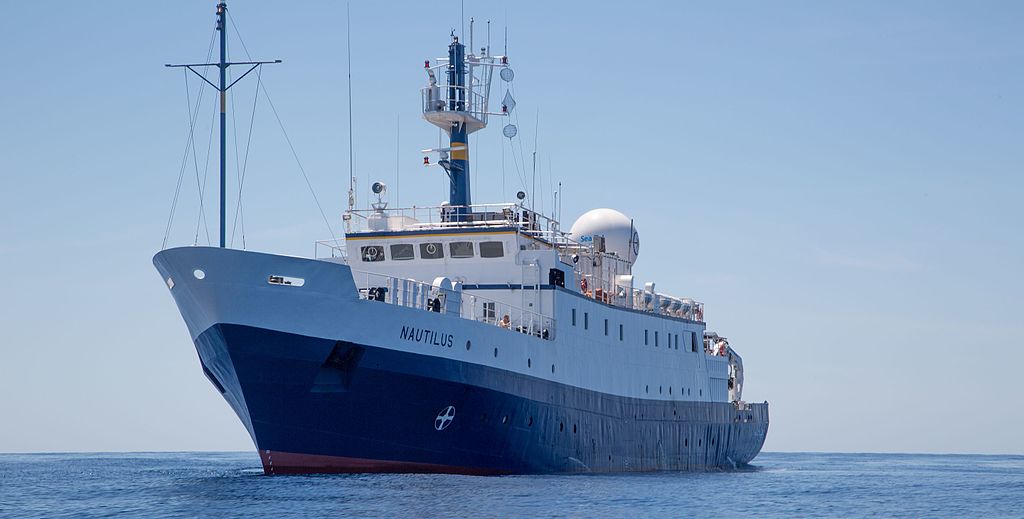
(Source: Ocean Exploration Trust/Institute for Exploration, via Wikimedia Commons.)
The Nautilus was on a 10-day research trip through a marine sanctuary – an area of ocean protected from human activities like fishing. Inside this protected area, southwest of Monterey, California, is a huge underwater mountain. The mountain is called Davidson Seamount, and it is home to a lot of sea life.
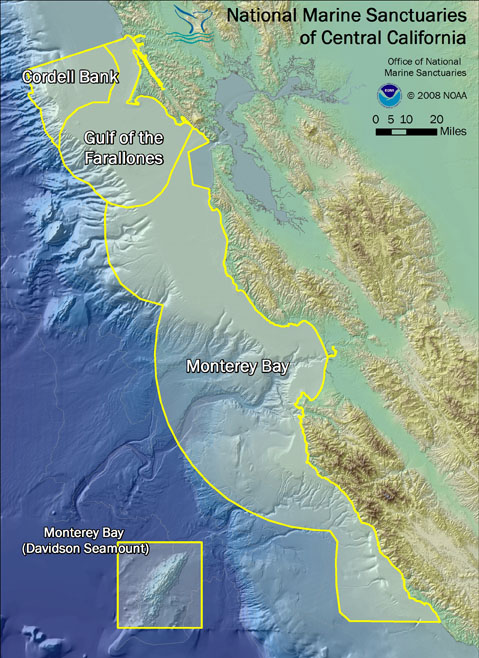
(Source: NOAA, via Wikimedia Commons.)
The ROVs had been on a 35-hour trip to explore the Davidson Seamount. The scientists were trying to collect information about what plants and animals live deep down in that area. The ROVs were about 2 miles (3.2 kilometers) below the sea.
Near the end of the trip, the ROVs began sending back images of octopuses – hundreds of them. Almost all of the octopuses appeared to be female. All but about three were turned inside out, protecting eggs that were attached to the rocks.
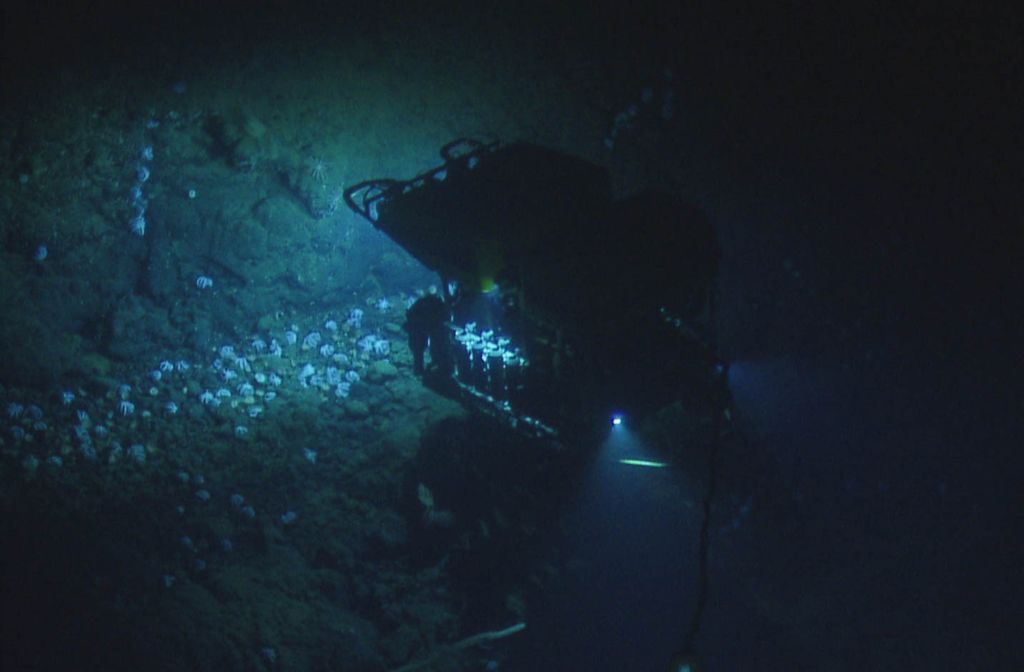
(Source: Ocean Exploration Trust/NOAA.)
Octopuses lay eggs once in their lifetimes. When they do, they attach the eggs to a hard surface. They protect and clean the eggs until they hatch, often covering the eggs with their bodies.
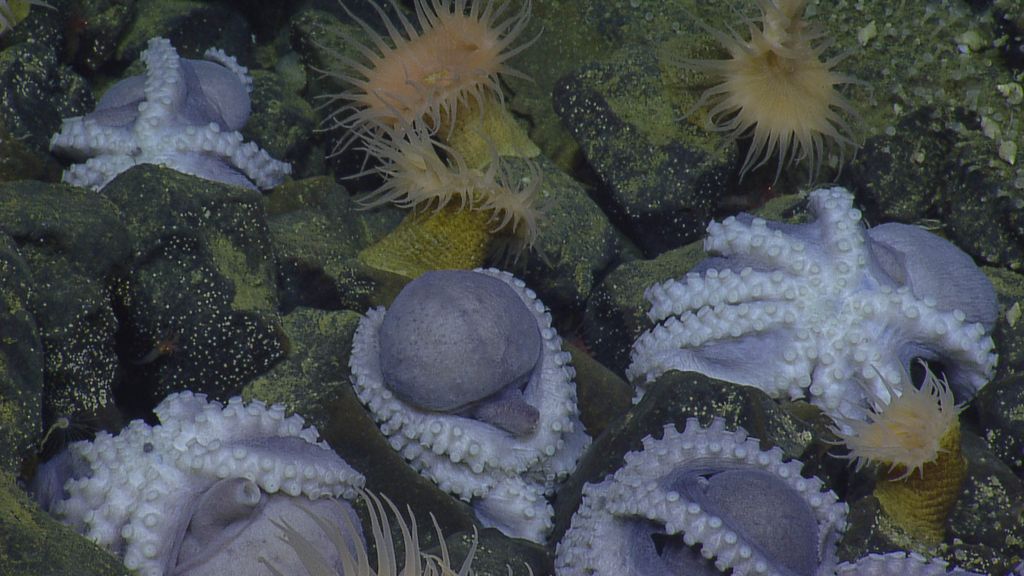
(Source: Ocean Exploration Trust/NOAA.)
It’s unusual to see octopuses in groups – they are normally seen alone. Chad King is the lead scientist on the Nautilus. He said, “This has never been discovered on the West Coast of the US…and never in the world with these numbers. I’ve never…come across something like this”
In all, scientists think there were about 1,000 of the creatures, which are known as Muusoctopus robustus.

(Source: Ocean Exploration Trust/NOAA.)
Before this, the largest group of octopuses ever seen was a similar group of about 100 female octopuses. These were spotted off the coast of Costa Rica in 2013. They were also protecting eggs. Scientists were able to check some of the eggs in the group near Costa Rica, and learned that most would not produce an octopus.
That was not true for the octopuses on the Davidson Seamount. Scientists could see that many of the eggs looked healthy.
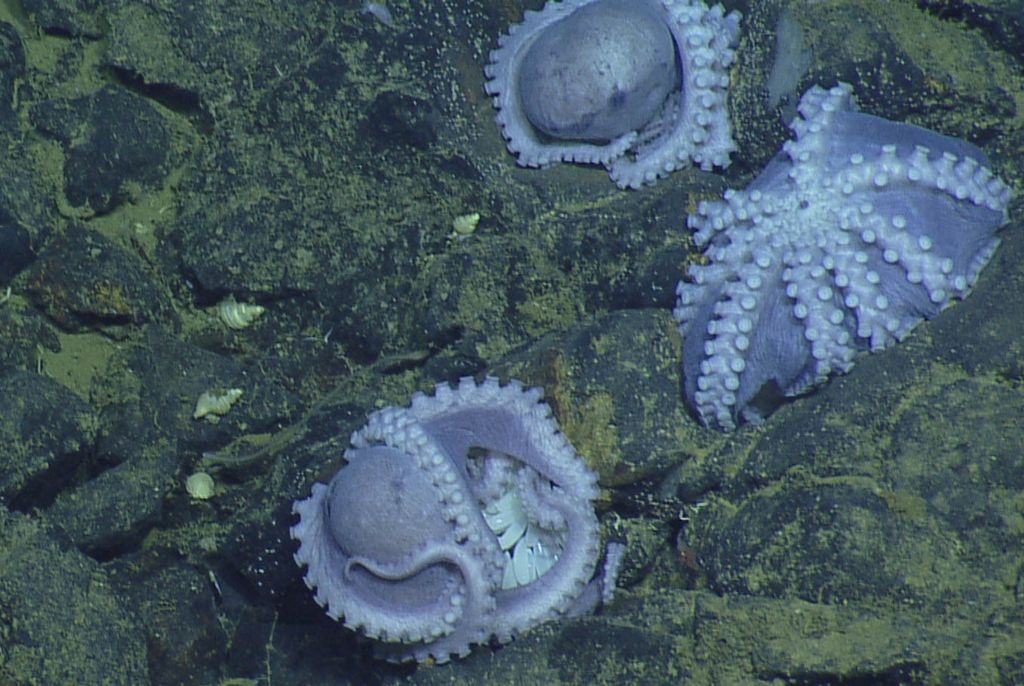
(Source: Ocean Exploration Trust/NOAA.)
Scientists are curious about what’s special in that area of the Davidson Seamount. The ROVs sent back pictures showing water that seemed to shimmer as it came out of cracks in the rocks. The water changed in the light as if warm water was mixing with cooler water. But the scientists were not able to measure the temperature. They wonder if it was warmer water or something else that brought the octopuses to the area.
The new discovery helps the scientists understand more about deep water octopuses. They hope to raise the money to go back and learn even more. “We really don’t know much about the deep sea — we’ve seen less than 1% of the world’s deep ocean bottoms,” Mr. King said.
That leaves a lot to be explored.
😕
This map has not been loaded because of your cookie choices. To view the content, you can accept 'Non-necessary' cookies.
